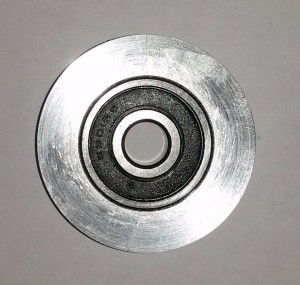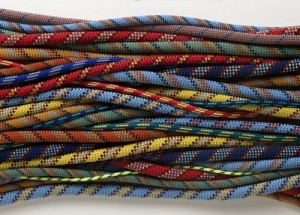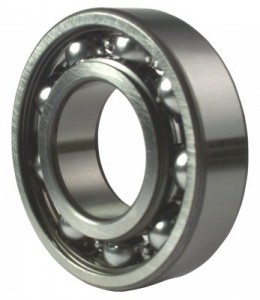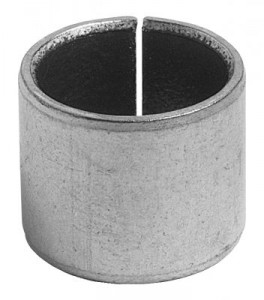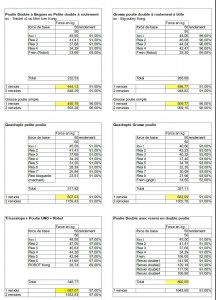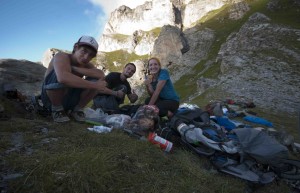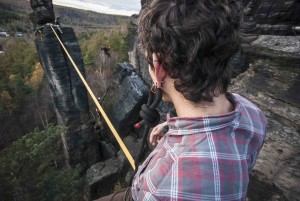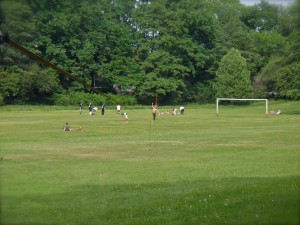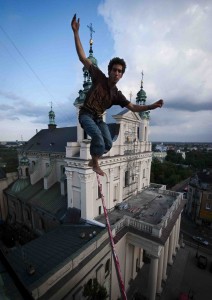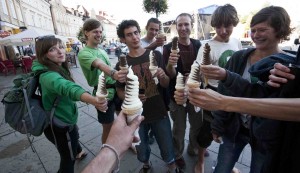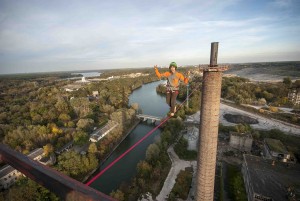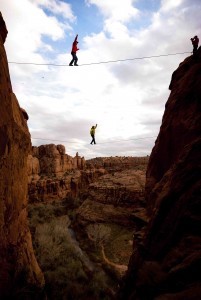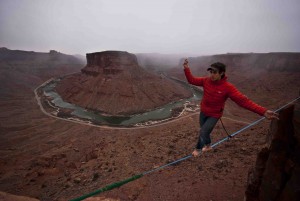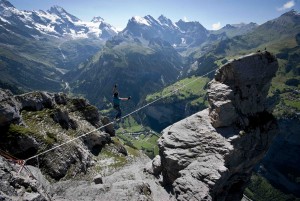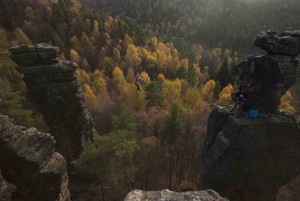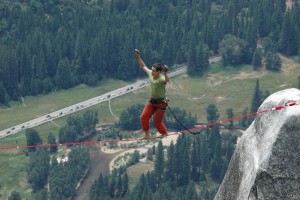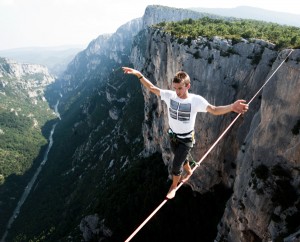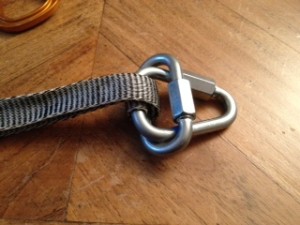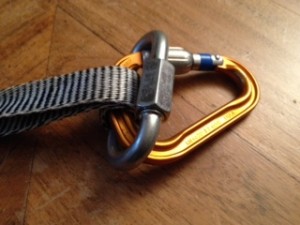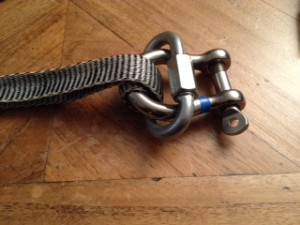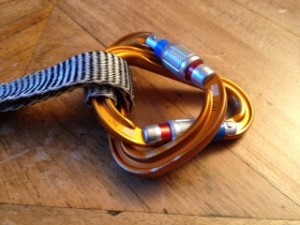Le rendement des poulies. C’est le dossier du jour avec l’expert Romain Schempf de Slack Mountain qui nous a pondu un dossier pointu sur les poulies et leur rendement avec l’aide de Petzl et Wichard. Cela vous permet tout d’abord d’affiner vos connaissances techniques et physiques, et ensuite de mieux choisir votre matériel !
La taille du Réa :
Plus la taille du réa de la poulie est importante, plus la distance parcourue par la corde sur celle ci est importante, et donc moins le déplacement au niveau de l’axe poulie est important par rapport à la distance de corde parcourue.
Un réa de 60 mm aura une circonférence de 3,14 x 60 = 188,4 mm.
Un réa de 32 mm aura une circonférence de 3,14x 32 = 100,48 mm.
Donc en un tour de poulie avec un réa de 32 mm on aura parcouru que 53% (100,48/188,4) de distance parcourue en un tour de poulie avec un réa de 60 mm
Attention : cela veut dire pour schématiser qu’il faut faire tourner la poulie un peu plus pour arriver au même niveau avec la même force appliquée.
La taille de l’axe a aussi son importance.
Un axe de 12 mm aura une circonférence de 3.14 x 12 = 37.68 mm
un axe de 15 mm aura une circonférence de 3.14 x 15 = 47.1 mm
Une poulie de 32 mm avec un axe de 15 mm aura un ratio de 100.48/47.1 = 2.13
Alors qu’une poulie de 32 mm avec un axe de 12 mm aura un ratio de 100.48/37.68 = 2.67
La poulie de 32 mm avec un axe 12 mm déplacera la corde 2.67 mm pour 1 mm sur l’axe, alors que la poulie de 32 mm avec un axe de 15 mm déplacera la corde de 2.13 mm pour 1 mm sur l’axe.
Ce n’est donc pas seulement la taille du réa qui compte mais le rapport de la taille du réa sur la taille de l’axe central de la poulie
Et si l’on compare avec une poulie de 60 mm avec un axe de 12 mm on obtient: 188,4/37,68 = 4,98 soit plus du double qu’avec un réa de 32 mm et un axe de 15 mm
La rotation de l’axe central générant des frottements il faut donc minimiser cette dernière pour avoir un meilleur rendement. D’où l’intérêt d’avoir un meilleur ratio:
La poulie de 60 mm avec un axe 12 mm déplacera la corde 4,98 mm pour 1 mm sur l’axe, alors que la poulie de 32 mm avec un axe de 15 mm déplacera la corde de 2.13 mm pour 1 mm sur l’axe.
Le cordage :
Sur une poulie, le meilleur ratio est d’avoir un cordage avec un diamètre situé entre 1/6e et 1/8e de la taille du réa, (au delà, la corde n’a plus assez de friction pour faire tourner le réa de la poulie et glisse directement dessus, cela ne sert plus à rien d’avoir un réa qui tourne). Les cordes sont solides et flexibles et donc déformables sous la pression. Plus le cordage sera fin, plus la friction et l’écrasement de la corde sera réduit et donc le rendement augmentera (dans la limite des 1/8 de la taille du réa, sinon le rendement se réduit).
Si le cordage est supérieur au 1/6 le rendement sera réduit.
Sur un réa de 60 il faudrait donc un cordage de 10 mm à 8 mm (60/8 =7,5 n’existant pas en cordage courant).
Sur un réa de 32 mm il faudrait un cordage de 5 mm à 4 mm ( 32/6 = 5,3 n’existe pas).
Petit point supplémentaire: les cordages et les réa auront un meilleur rendement plus la gorge de la poulie sera adaptée au diamètre du cordage, entre une poulie à gorges de 60 mm avec une corde de 10mm et une poulie de 60 sans gorges (plat) le rendement diminuera d’environ 5 % (dû à l’écrasement de la corde qui augmente donc la friction.)
Les roulements à billes :
Il y en a pour tout les prix et toutes les qualités. Les « meilleurs roulements » sont les SKF, leader mondial du roulement.
La nomenclature des roulements est toujours identique quelque soit la marque
- leschiffres indiquent les dimensions
- si rien n’est indiqué après leschiffres cela indique que les roulements sont à l’air libre
- ZZ: le roulement possède des caches anti-poussières
- RS: le roulement est étanche
- C3: roulement haute vitesse
Les roulements à billes sont faits pour des vitesses moyennes de 1000 à 20000 tours/minute selon les modèles.
Les roulements à billes seront plus efficaces que les bagues autolubrifiées jusqu’à la limite de charge d’utilisation. Au dessus de la CMU les billes auront tendance à se déformer. Le principe du roulement est de réduire les frottements en réduisant le point de contact grâce aux billes (au lieu de quelque cm², on réduit la zone à quelque mm²).
Par contre une zone réduite de quelque mm² subit toute la charge et aura une limite avant déformation atteinte plus rapidement.
Les bagues auto-lubrifiées :
Réalisées en Bronze, cuivre, laiton, elles ont la propriété de ne pas adhérer (se gripper ) aux autres métaux (acier, alu).
Elles auront un rendement réduit par rapport aux roulements à billes, mais aux limites d’utilisation du roulement à billes les bagues permettront de monter beaucoup plus haut en charges.
Par exemple : les voitures sont sur rotule à billes, pour les camions la charge est trop importante et le système passe sur des bagues auto-lubrifiées car la charge serait trop élevée pour des billes, sauf à avoir des billes qui quadrupleraient de volume mais cela ne serait plus intéressant.
Quel est donc le rendement théorique des poulies utilisées en slackline ?
Les calculs suivant représentent une valeur théorique, dans la réalité les forces fournies varient et ne sont pas régulières dans le temps. Attention le total de la sommes des réa et bloqueur n’est valable qu’avec un renvoi. Sans renvoi le total doit être divisé par le rendement du bloqueur. Ne prenant aucune marque concurrente en référence nous nous baserons sur les rendements fournis par Petzl et Wichard. Attention toutes les marques n’ont pas la même qualité de rendement.
Matériel utilisé pour comparer :
Poulie petzl à roulements à billes servant de référence :
poulie minder réa de 51 mm rendement 97 %
poulie rescue réa de 38 mm rendement 95%
poulie prussik réa de 25 mm (axe de 10) rendement 91 %
Bloqueurs de corde servant de référence :
Protraxion petzl réa 38 mm (ou poulie minder avec machard) rendement 95 %
Micro traxion Petzl 28 mm (ou poulie rescue avec machard) rendement 91 %
Robot de Kong 35 mm rendement 69 %
Grigri 2 Petzl rendement 52 %
Plaquette Gigi 48 %
Pour les poulies quadruple, nous prenons l’exemple de 2 poulies doubles mises ensemble sur un multiplicateur d’ammarage, une perte supplémentaire de rendement s’ajoute à cause des frottements des cordes entre elles pour l’égalisation du système pour que les poulies restent droite.
Pour nos ingénieurs qui veulent s’amuser à faire des calculs plus personnalisés, vous retrouverez ici la fiche pour calculer le rendement d’un poulie :
http://slack-mountain.com/shop/fr/content/12-rendement-poulie

